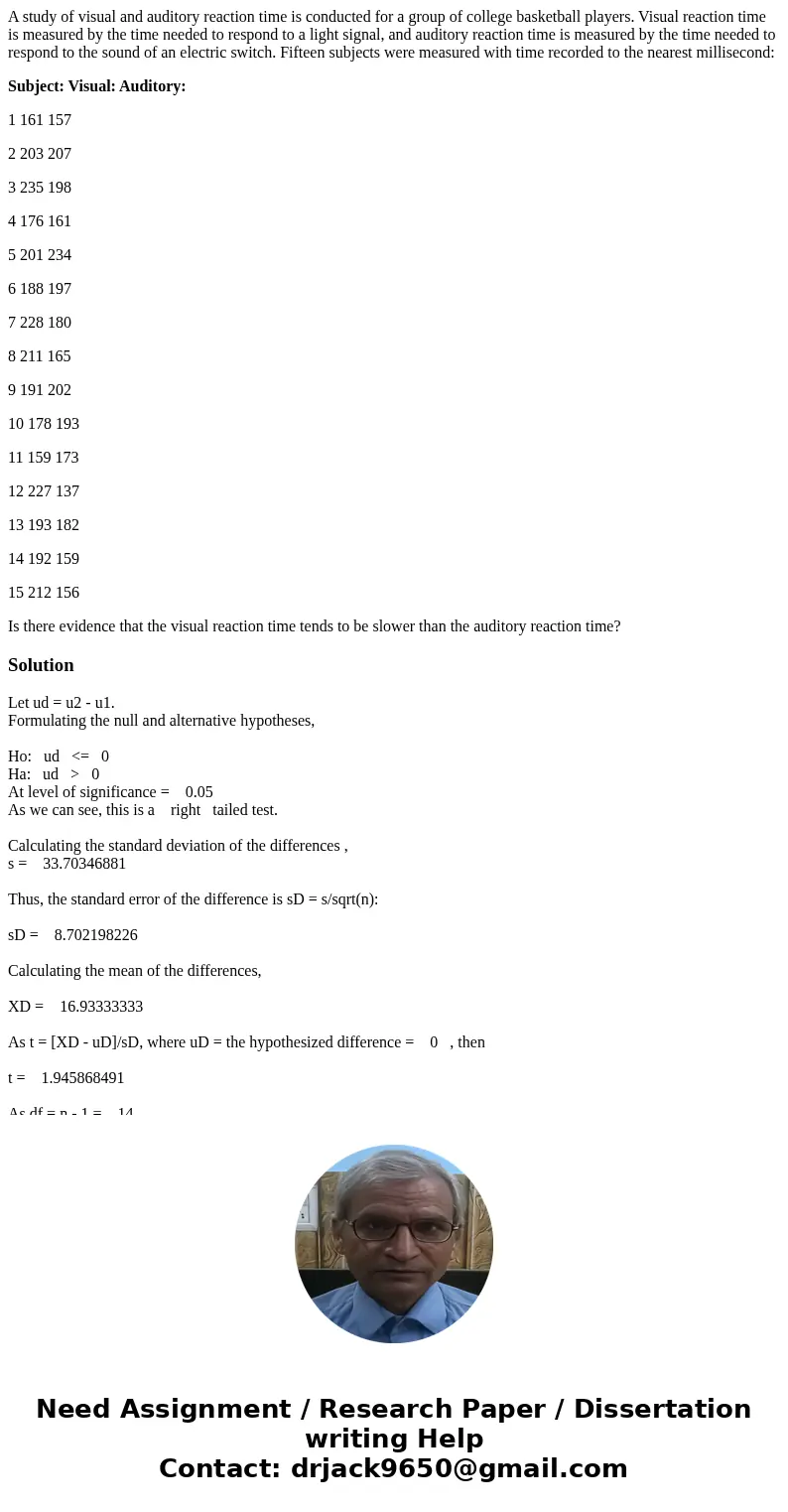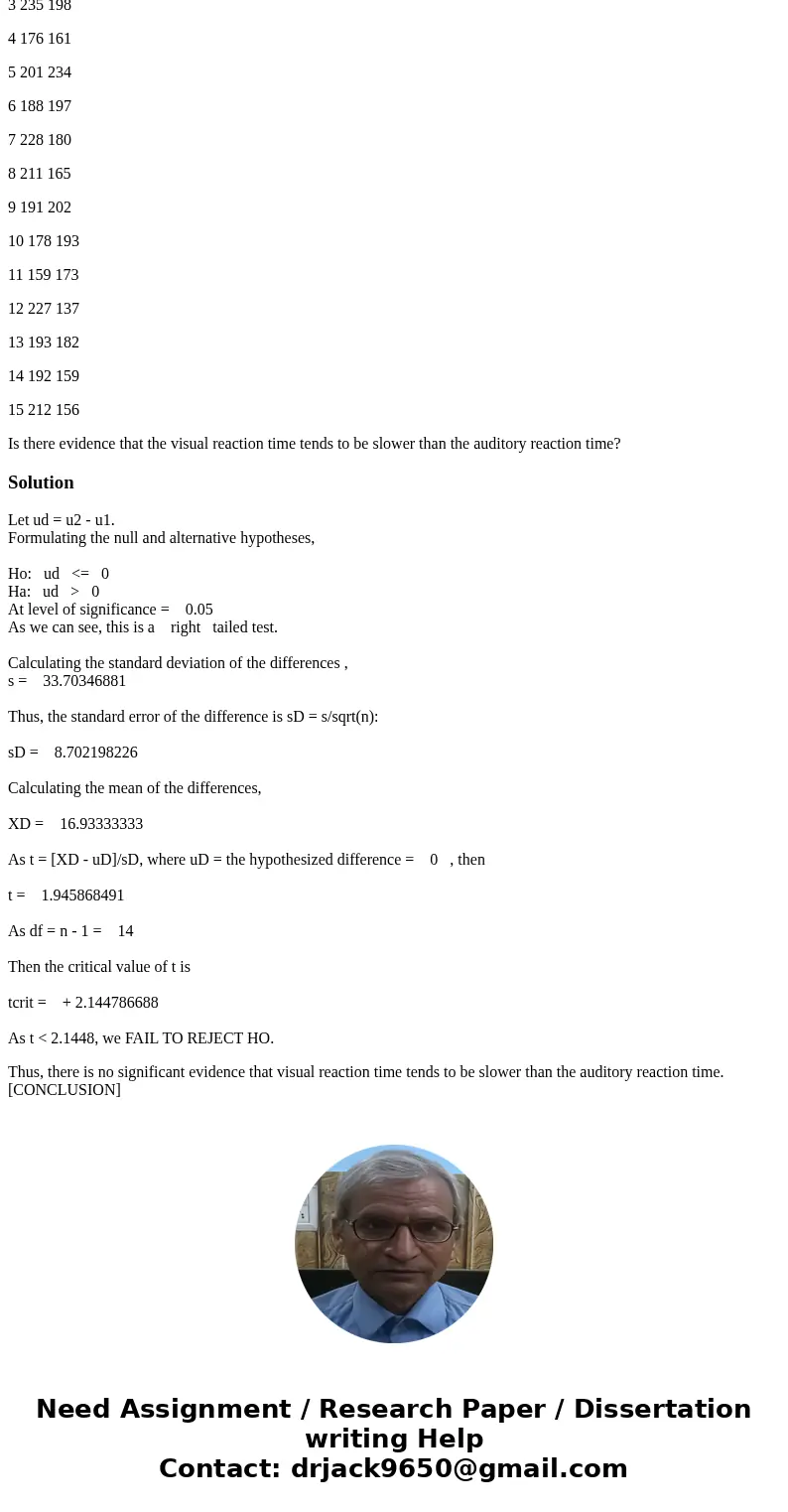A study of visual and auditory reaction time is conducted fo
A study of visual and auditory reaction time is conducted for a group of college basketball players. Visual reaction time is measured by the time needed to respond to a light signal, and auditory reaction time is measured by the time needed to respond to the sound of an electric switch. Fifteen subjects were measured with time recorded to the nearest millisecond:
Subject: Visual: Auditory:
1 161 157
2 203 207
3 235 198
4 176 161
5 201 234
6 188 197
7 228 180
8 211 165
9 191 202
10 178 193
11 159 173
12 227 137
13 193 182
14 192 159
15 212 156
Is there evidence that the visual reaction time tends to be slower than the auditory reaction time?
Solution
Let ud = u2 - u1.
Formulating the null and alternative hypotheses,
Ho: ud <= 0
Ha: ud > 0
At level of significance = 0.05
As we can see, this is a right tailed test.
Calculating the standard deviation of the differences ,
s = 33.70346881
Thus, the standard error of the difference is sD = s/sqrt(n):
sD = 8.702198226
Calculating the mean of the differences,
XD = 16.93333333
As t = [XD - uD]/sD, where uD = the hypothesized difference = 0 , then
t = 1.945868491
As df = n - 1 = 14
Then the critical value of t is
tcrit = + 2.144786688
As t < 2.1448, we FAIL TO REJECT HO.
Thus, there is no significant evidence that visual reaction time tends to be slower than the auditory reaction time. [CONCLUSION]


 Homework Sourse
Homework Sourse